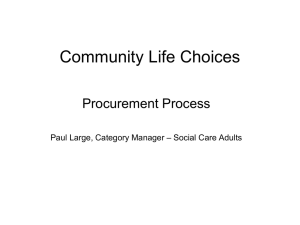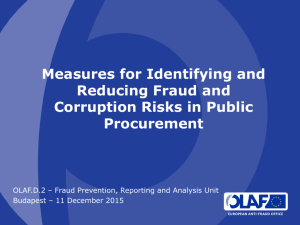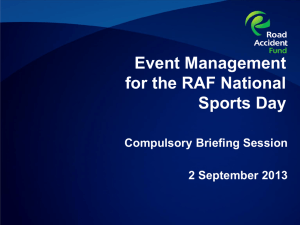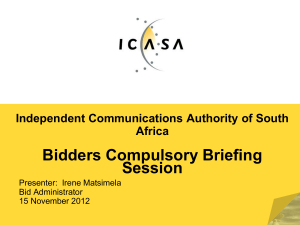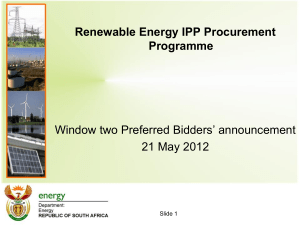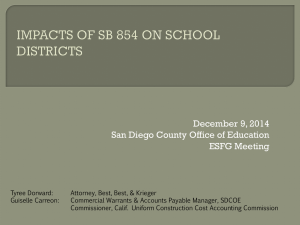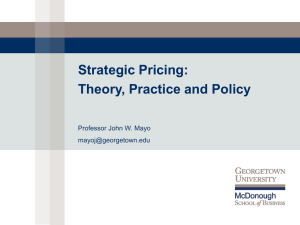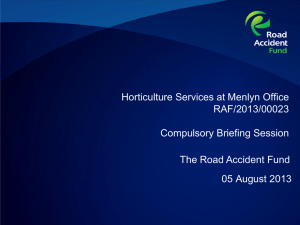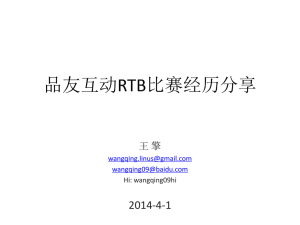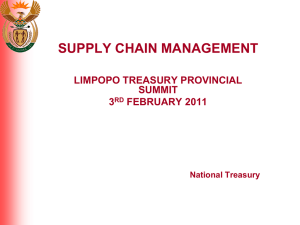fraud awareness programs - Guide to Combating Corruption
advertisement
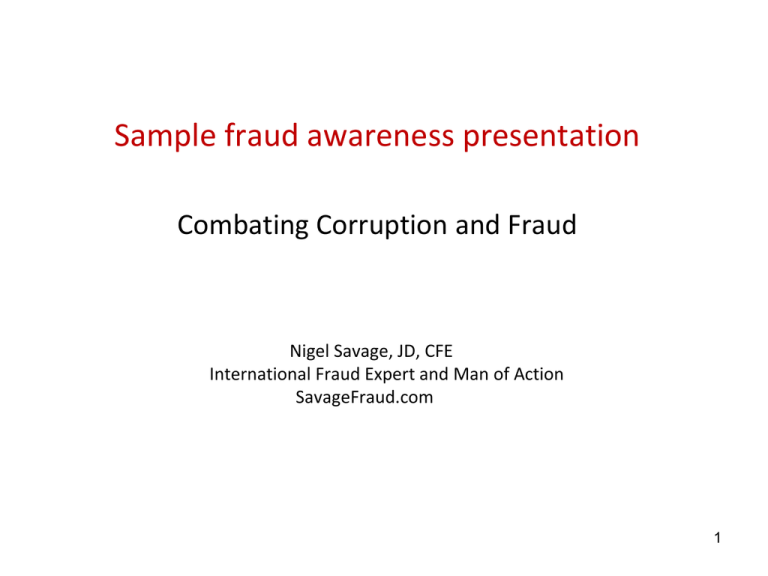
Sample fraud awareness presentation Combating Corruption and Fraud Nigel Savage, JD, CFE International Fraud Expert and Man of Action SavageFraud.com 1 Categories of corruption and fraud schemes • • • • Corruption o Bribes and kickbacks o Hidden interests in contractors by project officials Bid rigging o Rigged specifications o Unbalanced bidding o Leaking of bid information o Change order abuse Fraud o False statements and claims o False and inflated invoices o Failure to meet contract specifications o Product substitution Collusive bidding by contractors o Agreements by bidders to inflate bid prices, rotate winning bidders, divide markets, etc. 2 The schemes often are linked… 1. A BRIBE is offered or demanded in exchange for the promise of a contract award or other favor, which leads to… 2. Some form of BID RIGGING to exclude the other, often more qualified and less expensive bidders, and finally… 3. FRAUD in by the bribe payer, to cover the cost of the bribe and exploit the corrupt relationship. The fraud can take the form of: False, inflated or duplicate invoices Failure to meet contract specifications Substitution of cheaper inferior materials or products Fraud is the most costly and disruptive stage. 3 Corruption • Bribes & kickbacks • Conflict of interest 4 Bribes and kickbacks Giving a “thing of value” 1. 2. 3. 4. 5. 6. 7. “Gifts, travel & entertainment Sexual favors “Study tours” Rental of properties, etc. Cash payments Payments thru subs, local partners, consultants, etc. Hidden interests To influence a contract award or execution: S P Q Q D F selection price quantity quality delivery…and facilitate fraud 5 Why were bribes paid? • To be short listed • For a contract award • To expedite the payment of invoices • For contract amendments and extensions • To influence inspectors to accept sub-par work or goods • To compromise auditors and NGOs • To avoid cancellation of the contract for poor performance 6 Conflicts of interest For example, an employee: Secretly owns a supplier or contractor, or Sets up a “shell company” through which he or she purchases supplies at an inflated price, or Has an undisclosed interest in property sales or leases, etc. 7 Corruption red flags • • • • • • • • • • • Complaints from losing bidders “SPQQD” factors Unjustified sole source awards Multiple awards just under procurement thresholds Pressure to select an unknown or unqualified contractor Pressure to select a particular subcontractor or agent Long delays in contract negotiations or award Involvement of unnecessary broker or questionable agent Undisclosed agent fees and commissions Questionable contract amendments and extensions Procurement staff live beyond their means 8 Bid rigging Unbalanced bidding Rigged specifications Excluding qualified bidders Leaking bid data Manipulation of bids after receipt Unjustified sole source awards Split purchases Change order abuse 9 Bid rigging red flags • Repeat [sole source] awards to the same bidders • Multiple awards just under thresholds (followed by change orders or contract extensions) • Bids just at or close to budget or estimate • Narrow specifications • Ambiguous specifications • Unreasonable pre-qualification procedures • Short or inadequate notice to bidders • Fewer than the average or required number of bidders • Low bid awards followed by change orders 10 Collusive bidding People of the same trade seldom meet together, even for merriment and diversion, but the conversation ends in a conspiracy against the public, or in some contrivance to raise prices. Adam Smith, The Wealth of Nations, 1776 11 Collusive bidding red flags • Connections between bidders, e.g., common addresses, fax numbers or personnel; assignment of contract to losing bidder, etc. • Persistent unexplained high prices • Unusual bid patterns; e.g. bids an exact % apart • Rotation of winning bidders • Same bidders bid; new bidders excluded • Losing bidders become subcontractors • False or forged bid securities 12 Fraud • Delivery of expired, fake or adulterated drugs • Reporting of exaggerated cure rates and project results • False CV’s and company histories • False and plagiarized feasibility studies and reports • Forged performance documents • Forged bid securities & manufacturer’s certificates • Delivery of substandard goods or equipment • False and inflated invoices 13 Aid-financed rural “school” 14 New aid-financed hospital 15 Fraud red flags • • • • “Outliers,” “mismatches,” etc. Poor quality goods or works Missing or altered supporting documents Inconsistencies between contractor’s claims and inspections • Culture of corruption of inspectors • No costs booked by contractor for work claimed • Complaints from users 16

